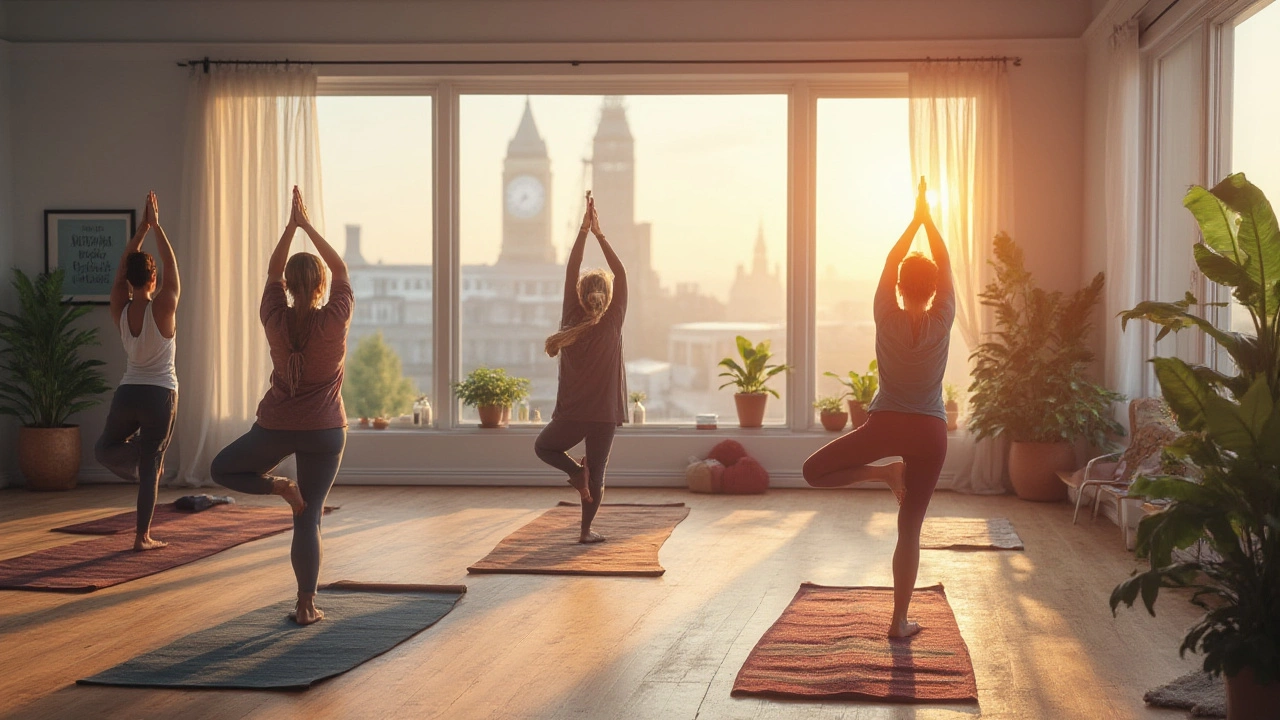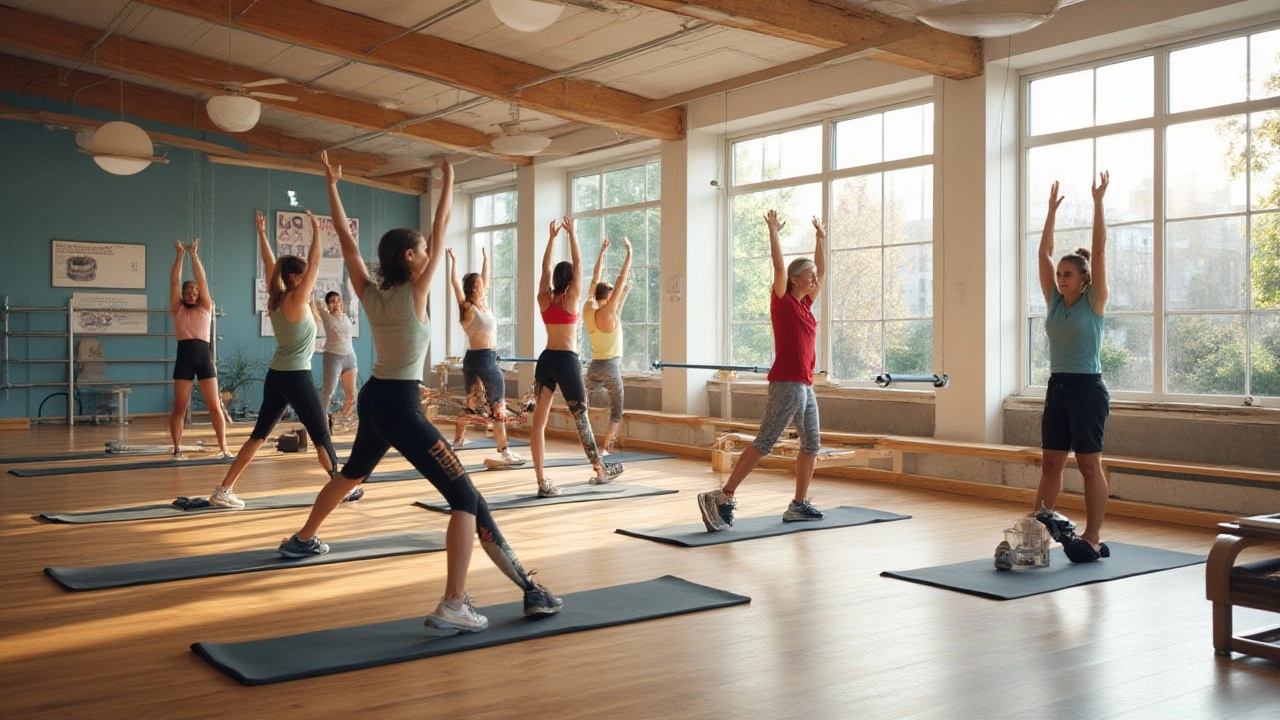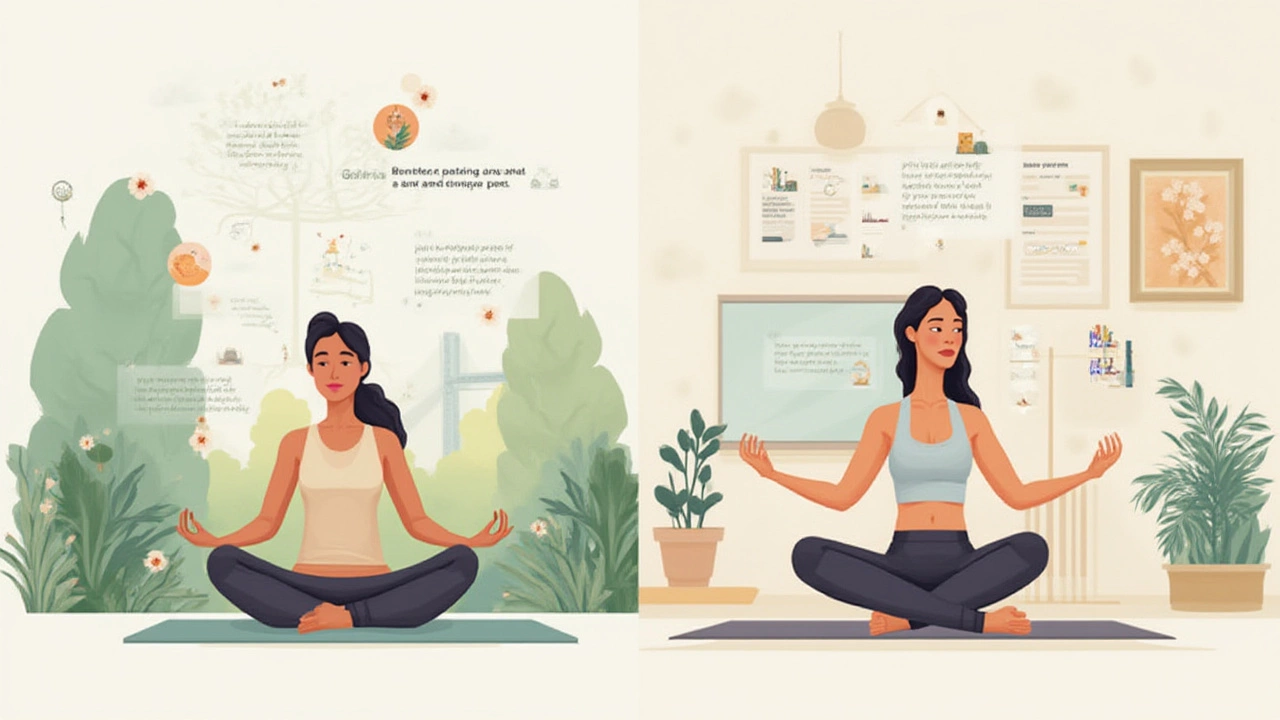
Which is better for your body (and your mind): yoga or Pilates? There’s a couple at my local studio—one swears by the harmony of yoga, the other can't get enough of the core power from Pilates. They walk out sweaty, sometimes laughing, sometimes quietly centered, always debating which practice is the champion. Here’s the thing: both can change your life, but how depends on what you’re looking for. If you’re staring at your exercise mat (probably with a mix of excitement and dread), wondering what’s going to make the difference for you, let’s sort through the facts and the feelings around these two practices.
Yoga has roots stretching back 5,000 years in India, blending stillness and movement with a heavy dose of mindfulness. You’ll find downward dogs, headstands, and deep, sometimes emotional breaths in every class. Pilates rolled onto the scene later—early 1900s—built by Joseph Pilates to help rehabilitate soldiers and dancers. Instead of ancient traditions, think innovative exercises, machines with springs, and moves that zoom in on your abs, back, and posture.
Here’s a fun fact: Pilates was nicknamed “Contrology” at first, because it’s all about precise, controlled movement. Yoga, by comparison, feels looser—sure, you’ll work up a sweat in a Vinyasa class, but there’s room to pause, adjust, and notice where your mind is wandering. Studies from the University of Miami have shown that yoga practitioners record lower cortisol levels, the hormone tied to stress, thanks to that breathwork and introspection. Pilates has its sweet spots too, like a 2021 review that highlighted stronger core muscles and less back pain—music to the ears of anyone who’s spent a decade slumped at a computer.
The real divide? Yoga spans styles from power flows to sleepy yin, while Pilates is laser-focused on strengthening moves. Pilates often uses equipment—like reformers or resistance bands—while yoga mostly sticks to mats and blocks. If you crave zen, or a reset for your spinning thoughts, yoga usually wins. If your goal is a rock-solid core and better posture, Pilates might feel like magic.
You’ve watched the videos—some people bend like pretzels in yoga, others have Pilates-toned abs you thought only existed in magazines. But what actually happens as you stick with either class?
In yoga, flexibility isn’t just a bragging right. With consistent sessions, hamstrings loosen, hips open, and tight shoulders finally get a break. A study by the International Journal of Yoga had participants stretch twice a week and found measurable gains in flexibility after eight weeks. Yoga’s core moves—planks, chaturangas, balances—also sneak in strength, especially if you move from pose to pose in a flow (think Ashtanga or Power Yoga styles).
Pilates zooms in tighter: you’ll use controlled reps to work every inch of your core, from deep ab muscles you didn’t know you had, to your back, glutes, and even small stabilizer muscles. That’s why so many physios and trainers in Perth recommend it for chronic lower back pain or weak postures. Research published by the Journal of Sports Science & Medicine found regular Pilates cut reported back pain and increased stability for office workers. You won’t get Cirque-du-Soleil flexibility, but you’ll stand taller and feel stronger in everyday movements—lifting kids, hauling groceries, or just sitting at your desk with less ache.
If you’re searching for clarity, check this quick table:
| Benefit | Yoga | Pilates |
|---|---|---|
| Flexibility | High improvements, full-body focus | Some improvement, mainly legs/back |
| Core Strength | Moderate (depending on style) | Very High, emphasizes deep abs |
| Balance | Significant (balancing poses) | Moderate |
| Posture | Improves via awareness | Directly targets alignment |
| Mental Health | Strong benefits, mindfulness | Some, due to focus and breath |
| Equipment | Usually just a mat/blocks | Mat or reformer/machines |
My friend Nathaniel—who’s spent most of his life surfing—swears his paddle power improved after tackling Pilates bridges and planks. Meanwhile, I reached to tie my shoes the other day and realized I’d gone weeks without that familiar pinch in my back, a little yoga victory.

If you’ve ever melted into savasana (that final rest in yoga), or floated out of a Pilates studio fired up and focused, you know both practices are about more than muscles. But they help your mind in different ways.
Yoga’s calming side isn’t just marketing hype. Breathwork (pranayama) and meditation slices into stress, keeps heart rates steady, and can even boost your memory. A 2019 study in “Mindfulness” found yoga improved sleep quality and focus in adults who practiced three times a week. Sometimes, you’ll even feel a bit of an emotional “release” in certain poses—hip openers can bring up feelings, while long, quiet holds in restorative classes help process stress and burnout.
Pilates is slightly different. There’s no chanting or long-held poses, but the intense focus on each movement acts like a moving meditation. You’re counting reps, tracking your breath, and making micro-adjustments. Some mental health professionals actually recommend Pilates for people who struggle with anxious thoughts, because it forces you into the present. A paper in the “Complementary Therapies in Medicine” journal traced Pilates sessions with participants and noted reduced anxiety and improved energy—especially in those using it during injury rehab or high-pressure work periods.
The surprise? Mixing both can multiply the benefits. On especially wild weeks, I’ll swap a flow yoga class for Pilates, then circle back to yoga for a mental tune-up. Works a treat for resetting a scattered mind during Perth’s stormy winters. If you’re after deep relaxation and better sleep, yoga often delivers quicker. If you want an energy shot with some built-in stress squashing, Pilates punches above its weight.
The million-dollar question: how do you decide which mat to roll out? Sometimes, the answer’s in your body, sometimes in your calendar, or even your personality.
One practical tip: try a trial class of both. Notice which movement style puts a smile on your face (or makes your muscles pleasantly ache the next day). If your schedule is mad, Pilates mat workouts can shrink to 20 minutes and still deliver results. Yoga classes range wildly in length and energy—from calming 10-minute flows before bed to 90-minute power sessions that leave you glowing (or, let’s be honest, a bit sweaty and humbled).
Here’s a schedule idea that’s worked for me and friends: combine Pilates two days a week (to sharpen strength) with one or two yoga sessions (for flexibility and recovery). That combo hits all the major health points, keeps boredom away, and supports both your mind and your muscles.

Taking the first step is the biggest hurdle. I’ve lost count of how many friends have signed up for a yoga or Pilates class, only to quit after a few awkward sessions. Here’s how to make the commitment stick:
Yoga and Pilates aren’t quick fixes—but backed by steady practice, real benefits sneak up on you. Suddenly, that nagging pain fades, you sleep deeper, and day-to-day stress seems to bounce off rather than stick. That’s worth sorting through sweaty classes or creaky first attempts, wouldn’t you say?